
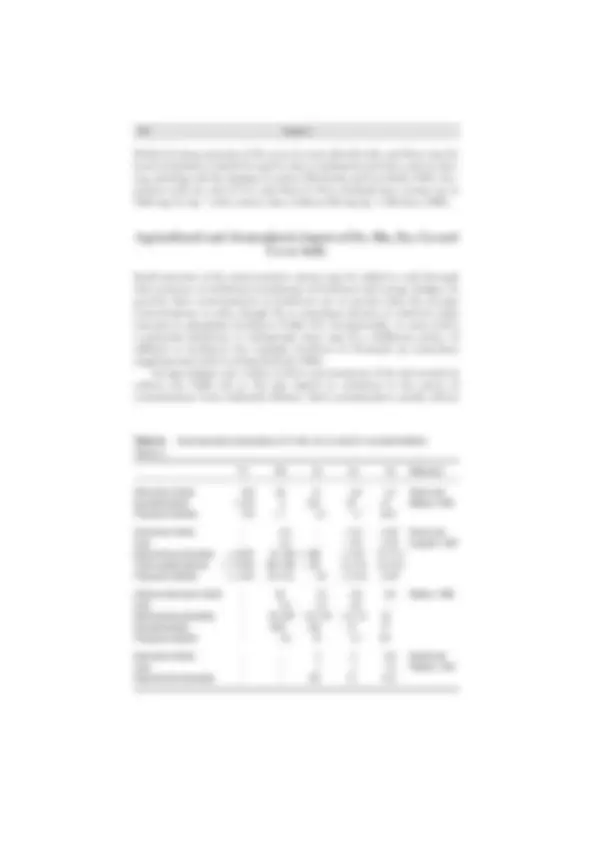
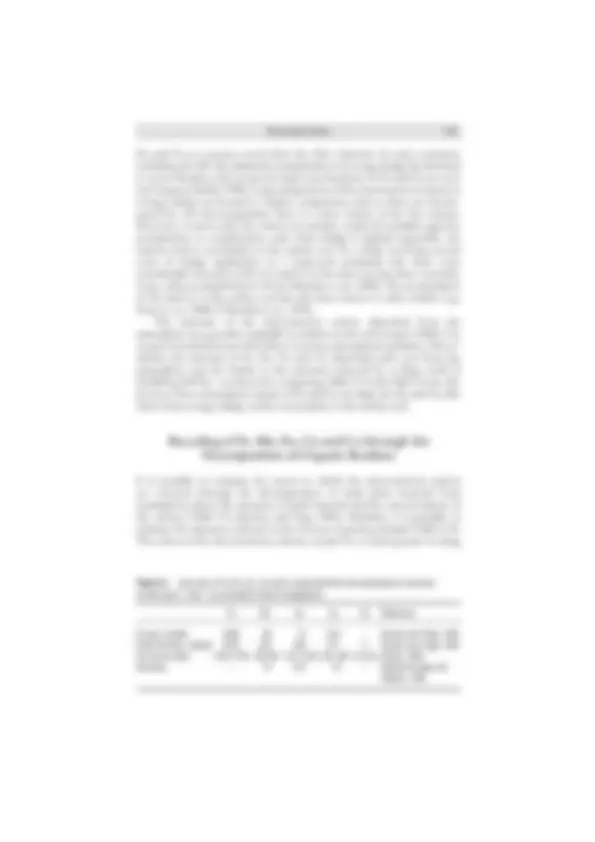




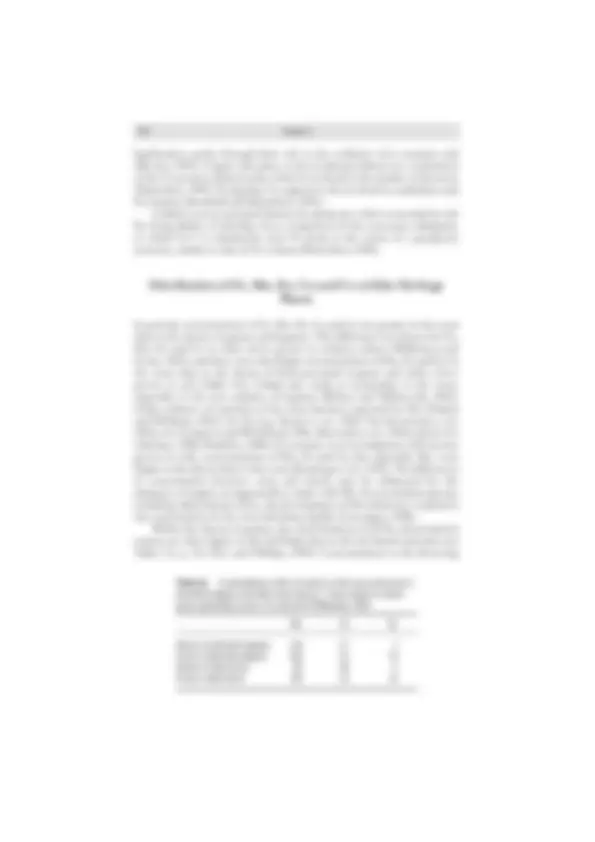
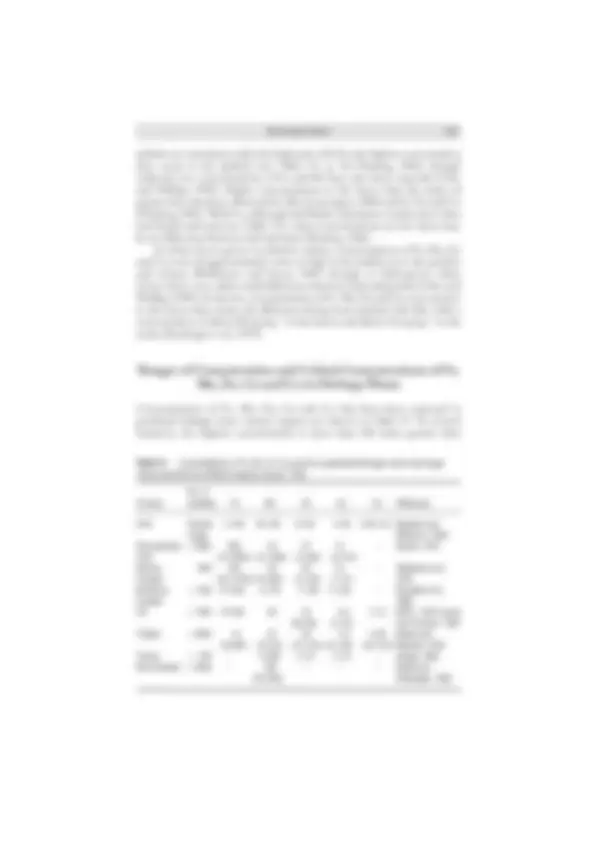
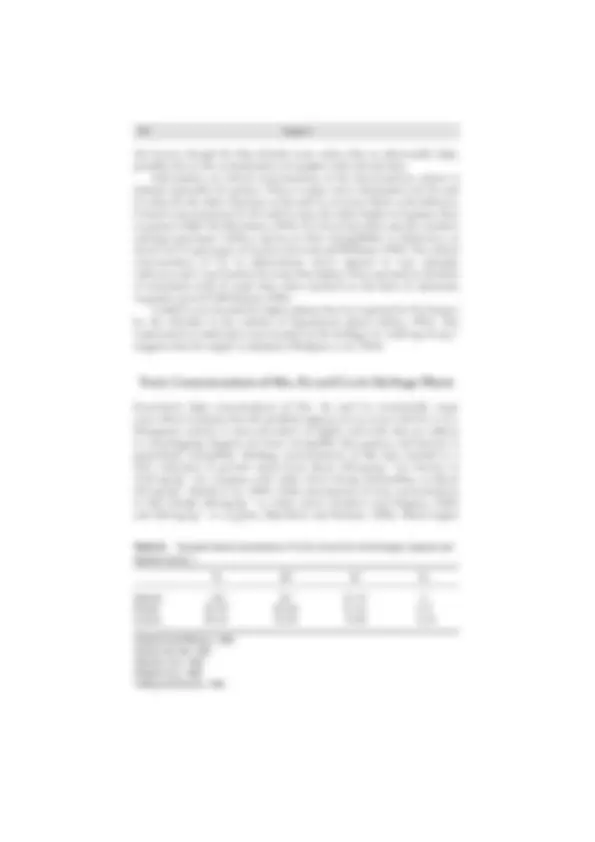
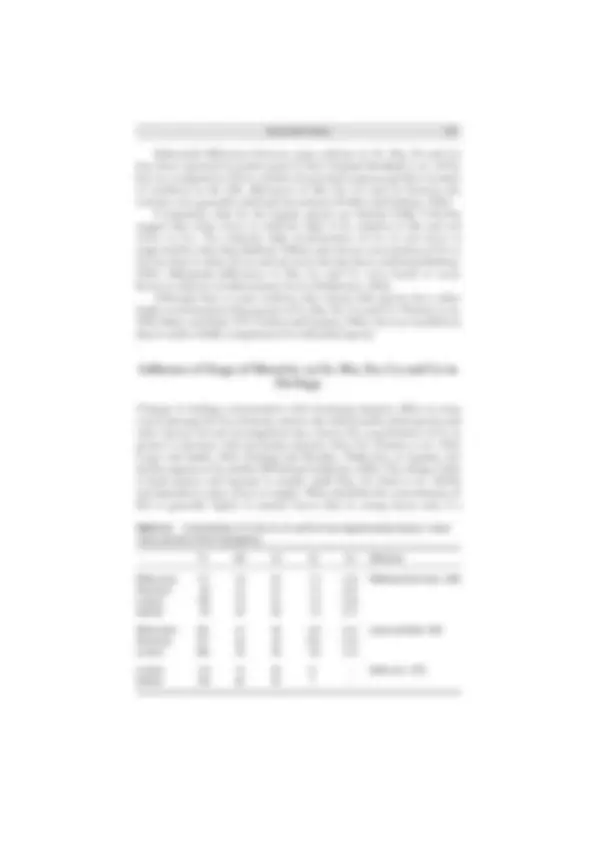
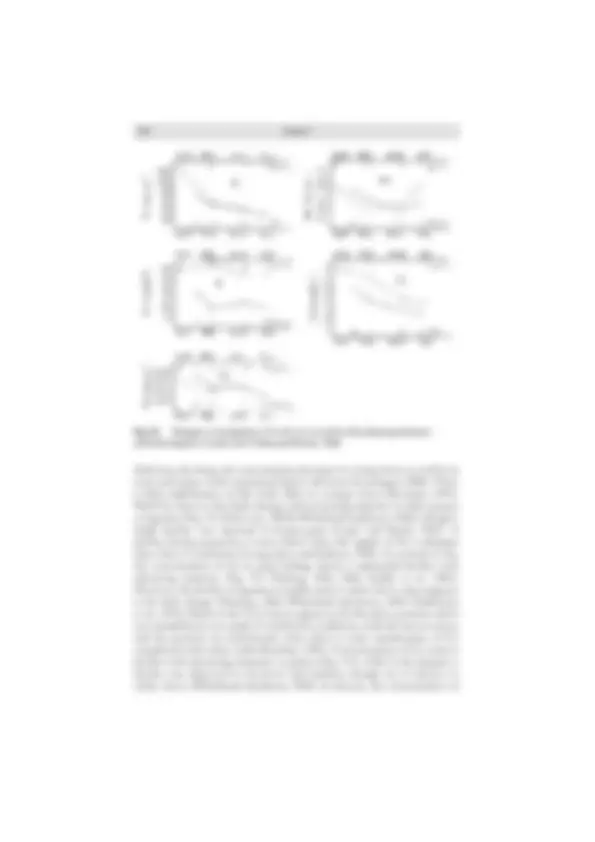
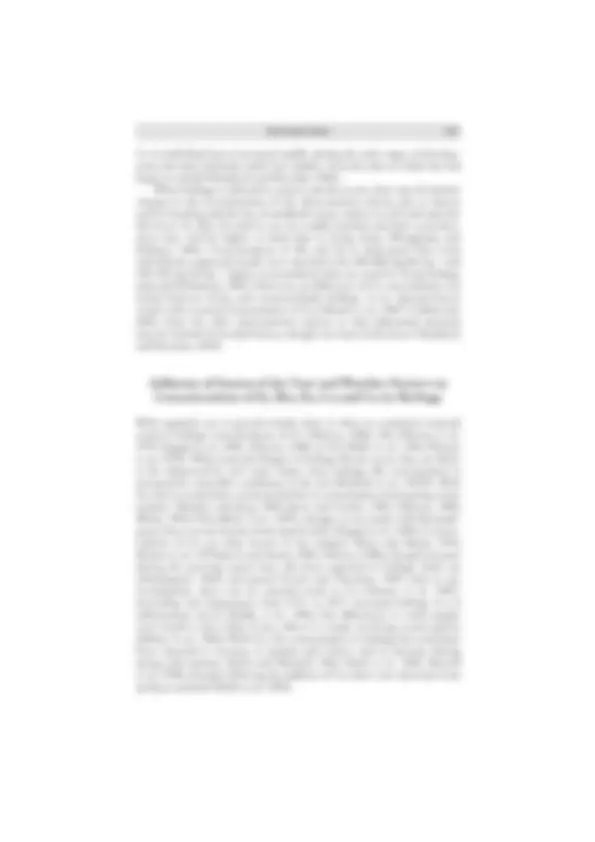
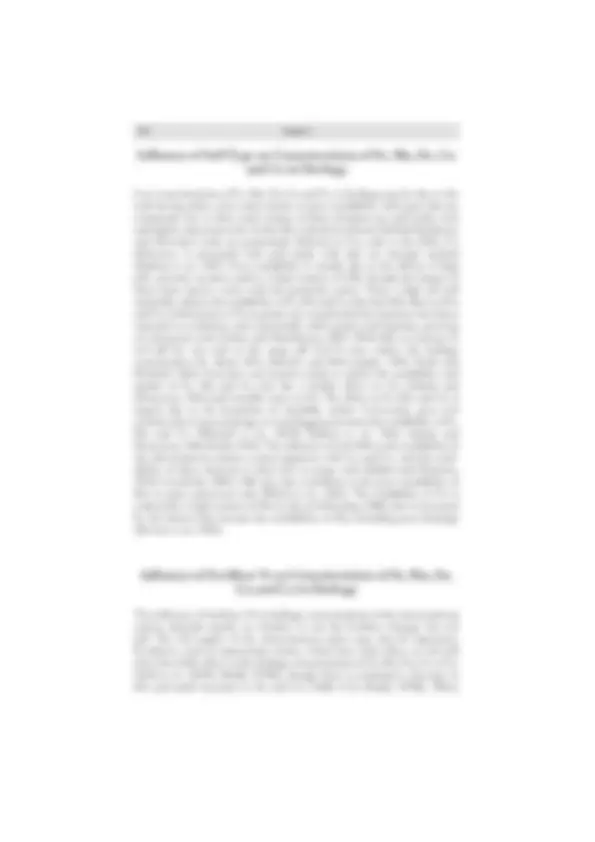

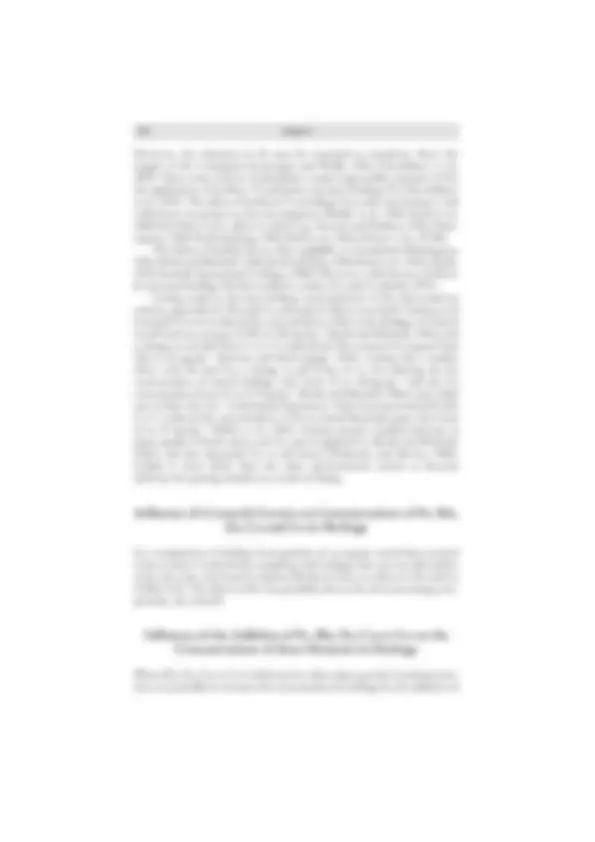
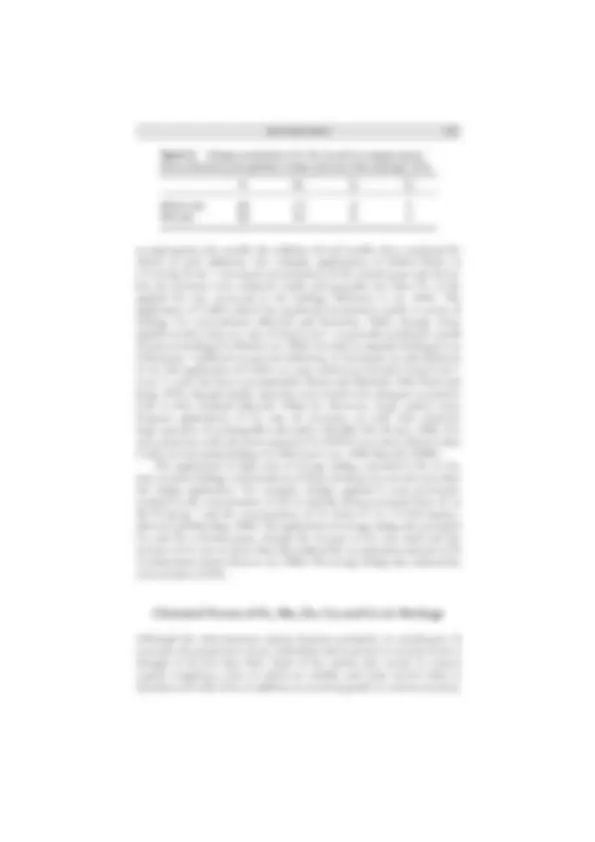
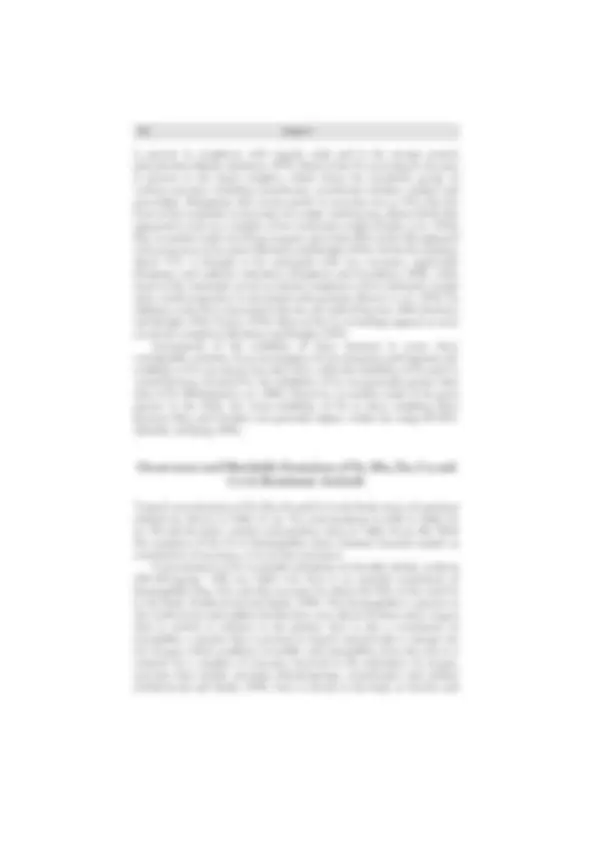

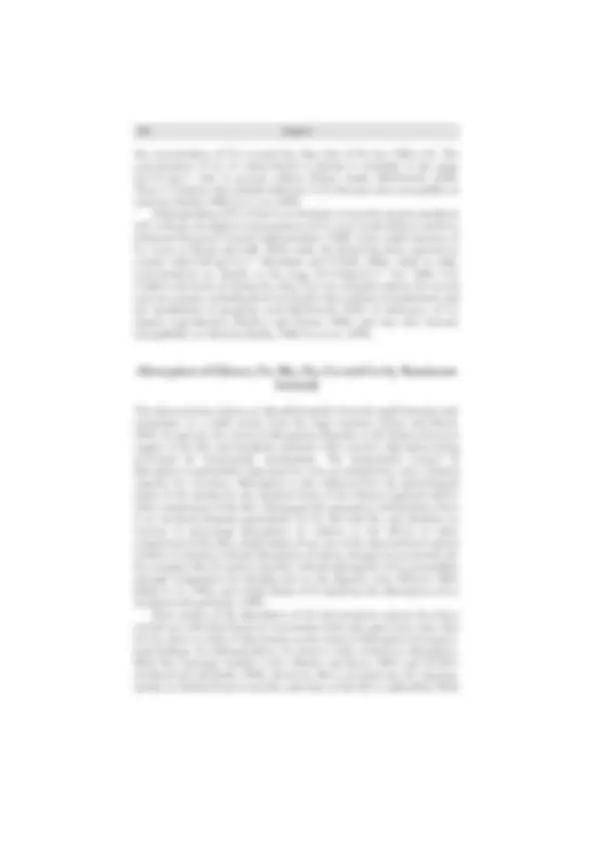

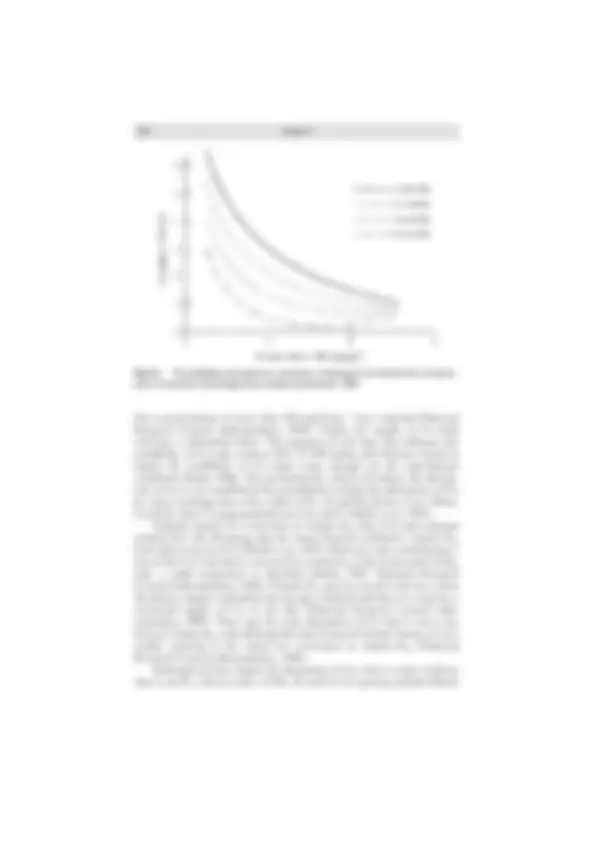

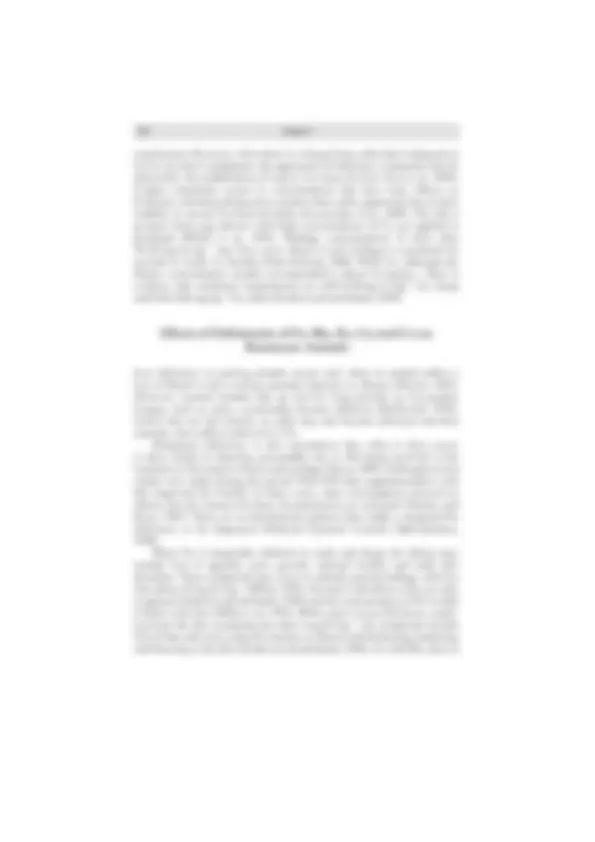

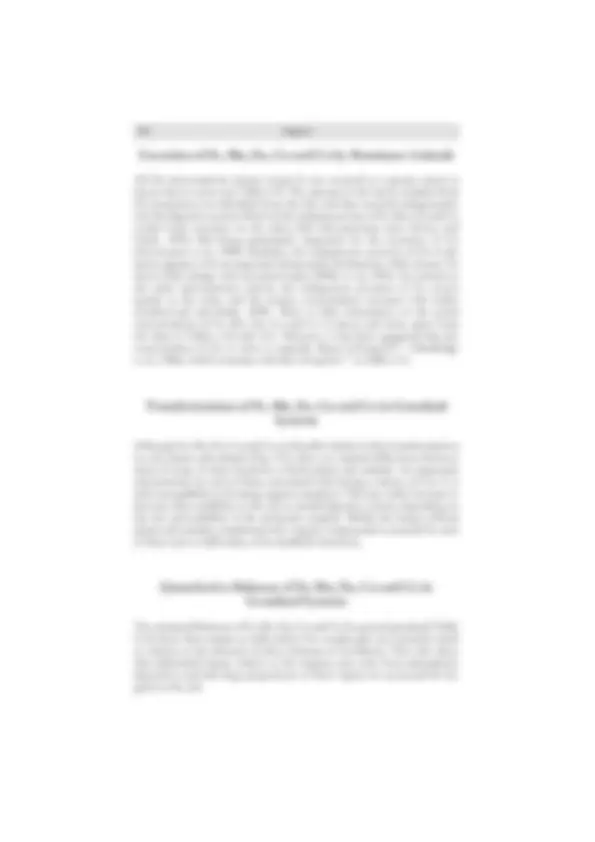




Estude fácil! Tem muito documento disponível na Docsity

Ganhe pontos ajudando outros esrudantes ou compre um plano Premium


Prepare-se para as provas
Estude fácil! Tem muito documento disponível na Docsity
Prepare-se para as provas com trabalhos de outros alunos como você, aqui na Docsity
Os melhores documentos à venda: Trabalhos de alunos formados
Prepare-se com as videoaulas e exercícios resolvidos criados a partir da grade da sua Universidade
Responda perguntas de provas passadas e avalie sua preparação.

Ganhe pontos para baixar
Ganhe pontos ajudando outros esrudantes ou compre um plano Premium
Comunidade
Peça ajuda à comunidade e tire suas dúvidas relacionadas ao estudo
Descubra as melhores universidades em seu país de acordo com os usuários da Docsity
Guias grátis
Baixe gratuitamente nossos guias de estudo, métodos para diminuir a ansiedade, dicas de TCC preparadas pelos professores da Docsity
The sources and concentrations of micronutrient cations (iron, manganese, zinc, copper, and cobalt) in soils. It also discusses the distribution of these elements in herbage plants, the influence of plant species and variety, stage of maturity, season of the year, weather factors, and fertilizers on their concentrations.
Tipologia: Notas de estudo
1 / 35

Esta página não é visível na pré-visualização
Não perca as partes importantes!




























Micronutrient CationsChapter 9
For each of these five elements, the soil content is derived almost entirely from the parent material. Each of the elements occurs in a variety of minerals in both igneous and sedimentary rocks, with Fe being by far the most abundant and Co the least abundant (see Table 2.2, p. 20). However, the elements vary in the extent to which they persist during weathering, and their retention in sediments and soils is influenced by factors such as pH and redox conditions and by the severity of leaching. Iron is present in igneous rocks in both ferric and ferrous forms. It is retained to some extent during the formation of clay minerals by substituting for aluminium in the lattice structure. It is also retained, except at low pH, by the precipitation of hydrous ferric oxides (Norrish, 1975). These hydrous oxides are insoluble at neutral or alkaline pH, but become increasingly soluble when conditions are acid. Under reducing conditions, ferric iron tends to be converted to the ferrous form, whose hydroxides are more soluble at neutral pH and therefore more susceptible to leaching. The Mn in rocks is often associated with Fe, especially as a minor substituent in ferromagnesian minerals. Much of the Mn is retained during weathering, some in residual primary minerals, some as a substituent in clay minerals, such as smectite, some precipitated as oxides and hydroxides, such as MnO 2 , and some adsorbed on to various mineral surfaces. The precipitated Mn may substitute for Fe 3+^ in secondary minerals, such as goethite (Gilkes and McKenzie, 1988). The Zn in igneous rocks occurs partly as a minor constituent of minerals, such as the pyroxenes, amphiboles, biotite and iron oxides (Adriano, 1986).
220
It also occurs partly in the form of sulphides, such as sphalerite (ZnS), and partly as oxides, carbonates, phosphates and silicates (Barak and Helmke, 1993). In sedimentary rocks, small amounts of Zn may also occur as a sub- stituent for Fe 2+^ and Mg 2+^ in clay minerals (Giordano and Mortvedt, 1980). The Cu in igneous rocks is present almost entirely as sulphide and, in contrast to Zn, it does not substitute for other cations in silicate minerals (Norrish, 1975). Weathering of the sulphide minerals releases Cu in solution, as either the divalent cupric ion, Cu 2+^ , or the monovalent cuprous ion, Cu +. However, the latter is unstable unless in the form of anionic complexes. The divalent Cu 2+^ tends to be adsorbed and occluded by Fe and Mn oxides, and also forms complexes with OM. Cobalt is present in igneous rocks, mainly in ferromagnesian minerals as a substituent for Fe. Ultrabasic rocks, especially those containing olivine, are particularly rich in Co (Adriano, 1986). During weathering, Co tends to be precipitated as the oxide, hydroxide or carbonate, all of which are insoluble at neutral to alkaline pH, but become increasingly soluble with acidity. There is also a strong tendency for Co to be adsorbed and occluded by Mn oxides (Smith and Paterson, 1995). Since the micronutrient cations in soils are derived almost entirely from the parent material, soils formed from basic rocks generally contain more of each of these elements than do soils formed from granite or sandstone. Of the sedimentary rocks, sandstones are normally low in all the micronutrient cations, whereas shales and clays may show some enrichment compared with igneous rocks (see Table 2.2). Shales that contain large amounts of OM may be particularly high in Cu (Stevenson, 1986). Limestones are normally low in all the micronutrient cations except Mn (see Table 2.2; Stevenson, 1986). Soils in temperate regions usually contain 1–5% Fe, 50–500 mg Mn kg−^1 , 20–200 mg Zn kg−^1 , 5–50 mg Cu kg−^1 and 2–20 mg Co kg−^1 (Table 9.1 plus other data). In general, the concentrations of all five elements are much lower in sandy soils than in loams and clays (e.g. Verloo and Willaert, 1990).
Micronutrient Cations 221
Fe Mn Zn Cu Co Reference
Temperate, normal range Temperate, typical
California England and Wales
Scotland, ten soils New Zealand, six soils
30,000–40,
12,000–100,
27,500–30,
100–4,
500–6003,
40–1, 50–2003,
370–3, 410–5503,
10–
50–
28– 60–
25– 82–
2–
c. 30
2– 10–
6– 9–
1–
4– 6–
1.2–70. 14–
Berrow and Burridge, 1980 Mikkelsen and Camberato, 1995 Bradfordet al., 1967 McGrath and Loveland, 1992 Ureet al., 1979 Haynes and Swift, 1984
Table 9.1. Reported concentrations of Fe, Mn, Zn, Cu and Co in soils (mg kg−^1 dry soil).
Zn and Cu to a greater extent than the other elements. In some countries, including the UK, the industrial contamination of sewage sludge has declined in recent decades, and excessively high concentrations of Zn and Cu are now less frequent (Smith, 1996). Large proportions of the micronutrient cations in sewage sludge are bound to organic components and, as these are decom- posed by soil microorganisms, there is a slow release of the free cations. However, in most soils, the cations are quickly rendered insoluble again by precipitation or complexation, and, when sludge is applied repeatedly, the cations tend to accumulate in the surface soil. In a study involving several years of sludge application to a long-term grassland soil, there were considerable increases of Zn, Cu and Co in the top 5 cm, but there was little, if any, effect at depths below 30 cm (Hemkes et al ., 1980). The accumulation of Zn and Cu in the surface soil has also been shown in other studies (e.g. Davis et al ., 1988; O’Riordan et al ., 1994). The amounts of the micronutrient cations deposited from the atmosphere are generally negligible in relation to the soil content (Table 9.3), except in localized areas where there is serious atmospheric pollution. Never- theless, the amounts of Fe, Zn, Cu and Co deposited each year from the atmosphere may be similar to the amounts removed by a silage yield of 10,000 kg DM ha−^1 , as shown by comparing Table 9.3 with Table 3.5 (p. 55). In areas where atmospheric inputs of Zn and Cu are high, the Zn and Cu, like those from sewage sludge, tend to accumulate in the surface soil.
It is possible to estimate the extent to which the micronutrient cations are recycled through the decomposition of dead plant material from assumptions about the amounts of dead material and the concentrations of the cations (Table 9.4; Sposito and Page, 1984). Similarly, it is possible to estimate the amounts returned in the excreta of grazing animals (Table 9.5). The return of the micronutrient cations, except Co, is much greater in dung
Micronutrient Cations 223
Fe Mn Zn Cu Co Reference
Europe, median North America, median UK (seven sites) Germany
2208 5676 1400–
68 236 68– 70
19 788 370– 210
536 441 98– 18
5 2.0–8.
Sposito and Page, 1984 Sposito and Page, 1984 Cawse, 1980 Kabata-Pendais and Adriano, 1995
Table 9.3. Amounts of Fe, Mn, Zn, Cu and Co deposited from the atmosphere to the land surface (g ha−^1 year−^1 ) as reported in three investigations.
than in urine (see Table 4.9, p. 91), but their release in plant-available forms is slow, due partly to complexation by organic constituents and partly to dung having an alkaline pH and thus rendering the micronutrient cations insoluble (Barrow, 1987). Although the amounts of the micronutrient cations applied in cattle slurry are often similar, on a per hectare basis, to those returned by grazing animals, the amounts of Zn and Cu supplied in pig slurry may be much greater. This is because CuSO 4 is often added to pig feed to increase the efficiency of feed conversion and to control dysentery, while ZnSO 4 is added to prevent the Cu inducing Zn deficiency (Christie, 1990). In a survey in Denmark, the average concentration of Cu in cattle slurry was 43 mg kg−^1 DM, while the average in pig slurry was 265 mg kg−^1 DM (Dam Kofoed, 1980). There appears to be little information on the actual concentrations of the micronutrient cations in slurries, but, on a DM basis, they are likely to be similar to the concentrations in manures (see Table 2.7, p. 31). The rates at which the micronutrient cations are released from the organic components of slurry or manure are enhanced by soil conditions that promote microbial activity, i.e. warm, moist, well-aerated soils of approximately neutral pH.
224 Chapter 9
Fe Mn Zn Cu Co
Assumed concentration in dead herbage (mg kg−^1 ) Return to soil from herbage (g ha−^1 year−^1 ) Assumed concentration in dead roots (mg kg−^1 ) Return to soil from roots (g ha−^1 year−^1 ) Total return from dead plant material (g ha−^1 year−^1 )
170 1200 400 2000 3200
115 800 200 1000 1800
34 240 40 200 440
Table 9.4. Typical amounts of Fe, Mn, Zn, Cu and Co returned to the soil through the death and decay of herbage and roots from a moderately intensive sward (g ha−^1 year−^1 ), assuming 7000 kg dead herbage and 5000 kg dead roots ha−^1 year−^1 , and concentrations of the elements estimated from data on pp. 232–239.
Fe Mn Zn Cu
Assumed concentration in urine (mg l−^1 ) Return in urine (g ha−^1 year−^1 ) Assumed concentration in dung (mg kg−^1 ) Return in dung (g ha−^1 ) Total return in excreta (g ha−^1 year−^1 )
Table 9.5. Estimated amounts of Fe, Mn, Zn and Cu returned to the soil in the excreta of dairy cattle grazing at a density of 700 cow days ha−^1 year−^1 (kg ha−^1 year−^1 ), assuming 25 l urine and 3.8 kg faecal DM per cow day−^1 , and typical concentrations derived from Tables 4.10 and 4. (p. 92).
forms. On the other hand, when cations are immobilized in the microbial biomass, their solubility, and hence their availability, is reduced. Much of the Fe in soils is present in hydrous ferric oxides and hydroxides, of which there are several different types, each with a different solubility. Haematite (Fe (^) 2O 3 ) and goethite (FeOOH) are the least soluble, followed in order of increasing solubility by lepidocrite (also FeOOH but differing from goethite in chemical structure) and amorphous Fe(OH) 3. These oxides are present partly as small particles and partly as amorphous coatings on other soil constituents. Depending on conditions, they may be transformed slowly from one to another (Lindsay, 1991). The availability of Fe in non-acid well-drained soils is normally extremely low, but it tends to increase when conditions are anaerobic, due to the conversion of the ferric to the ferrous form, whose hydroxides are more soluble. Even in soils that are well drained, there may be zones that are anaerobic, due to the presence of decomposing OM, and so some conversion of ferric to ferrous iron is possible. Manganese has three possible oxidation states in soils, Mn 2+^ , Mn 3+^ and Mn 4+, but only Mn 2+^ is stable in solution. The ions Mn 3+^ and Mn 4+^ form insoluble oxides and hydroxides in soils and are therefore precipitated. Although Mn 2+^ is stable in solution, it is subject to adsorption by OM, iron oxides and silicates, especially at pH > 6. In well-aerated soils at pH > 7, Mn 2+^ tends to precipitate as an oxide or hydroxide, often mixed with iron oxides as an amorphous coating on soil particles, though sometimes as MnO (^2) in nodules. The proportion of the soil Mn in exchangeable and soluble forms is highest in acid conditions (Marschner, 1988), partly because acidity increases the concentration of Mn 2+^ in solution:
226 Chapter 9
HOOC CH 2 C O
O
CO
CO
H 2 C
CO O
NH (^2)
H 2 C
NH
CH
CH (^2)
CH (^2) CH (^2)
CH (^2)
H
H 2 C
H 2 C
NH 2 CH (^2)
O CO
Fe
O
OH OH (^2)
OH (^2)
O
O Fe
OH 2
OH (^2) OH (^2)
OH (^2)
Cu
C
C
C C H O O
O
C O
O
O
O
N Fe
OH
(b) (d)
(a) (c)
Fig. 9.1. Chemical structures of some complexes formed between micronutrient cations and organic compounds: (a) Fe 3+^ with citric acid; (b) Fe 3+^ with catechol; (c) Cu 2+^ with glycine; (d) Fe 3+ with mugineic acid.
MnO 2 + 4H +^ + 2e−^ Y Mn 2+^ + 2H 2 O
Conversely, the concentration of Mn2+^ declines to about one-hundredth of its previous concentration for each unit increase in pH. The solubility of Mn is also influenced by redox conditions in the soil, and oxidation, which tends to reduce solubility, tends to occur within pores, while reduction tends to occur at anaerobic sites within aggregates (Robson, 1988). Thus, Mn may be subject to both oxidation and reduction at the same time, due to the spatial variation that occurs in the pH and redox potential of the soil. Most of the complexed Mn in soils is bound to inorganic rather than organic ligands (Laurie and Manthey, 1994). Zinc differs from iron and manganese in that it occurs in soils in only one valence state, Zn2+. Some Zn occurs as a partial replacement for Fe2+^ and Mg2+^ in ferromagnesian minerals, but often much of it is in the form of Zn2+ adsorbed by hydrous oxides, clays and soil OM. The extent of adsorption of Zn (and also of other cations) by Fe oxides depends on the types of oxide present. For example, goethite adsorbs more than haematite, due to its having more surface hydroxyl groups (Harter and Naidu, 1995). Zinc is also adsorbed on to the surface of carbonates. The Zn adsorbed by clays and OM is largely exchangeable, but, at pH > 5.5, increasing proportions are adsorbed by Fe and Mn oxides and complexed by OM, in forms that are not readily exchangeable. With an equilibrium solution concentration of 0.1 M , the adsorption of Zn by soils is about ten times greater at pH 6.5 than at pH 5.5 (Moraghan and Mascagni, 1991). Of the Zn present in the soil solution, about half exists as the free hydrated cation and the remainder is complexed by inorganic or organic ligands (Barak and Helmke, 1993). Some soil Cu is normally present in unweathered minerals, and some is adsorbed or complexed. Copper tends to be coprecipitated or occluded by hydrous oxides of Al, Fe and Mn, and these reactions increase with increasing pH (Kabata-Pendais and Pendais, 1992). Copper is also complexed by OM more tightly than any other of the divalent micronutrient cations, and almost all of the Cu in the soil solution is complexed (McBride, 1989). Whether the Cu is adsorbed, complexed or in free inorganic form, in most soils it exists almost entirely as the divalent Cu2+^. However, in waterlogged soils, it is partially reduced to Cu +, which may then form insoluble CuS. Much of the Co in soils occurs in unweathered ferromagnesian minerals and, after being released by weathering, is adsorbed by Mn and Fe oxides or is complexed by OM. Adsorption and complexation tend to increase with increasing soil pH. The Mn oxides have a particularly high adsorption capacity for Co (Fleming, 1988; Smith and Paterson, 1995). Although adsorption and the formation of complexes reduce the solubility and availability of Co, some of the Co associated with the Mn oxides is thought to be fairly labile (Norrish, 1975), as are some complexes of Co2+^ with OM. Availability is increased when drainage is poor (Berrow et al ., 1983).
Micronutrient Cations 227
In the movement of the micronutrient cations in the soil, diffusion is more important than mass flow (Moraghan and Mascagni, 1991). The move- ment of the micronutrient cations, especially Fe and Cu, occurs largely in the form of soluble complexes, many of which involve organic molecules that are produced by soil microorganisms or, in some instances, by plants themselves. The exudation of H +^ or HCO 3 −^ ions by plant roots may also influence the solubility and movement of the micronutrient cations through an effect on the pH of the rhizosphere (see p. 48). Such exudation depends largely on whether N is taken up as ammonium or nitrate: the uptake of ammonium results in the exudation of H +, which tends to increase the solubility and uptake of the cations, especially Fe, whereas the uptake of nitrate results in the exudation of HCO 3 −^ , which tends to reduce the solubility and uptake of the cations. The rate of root extension appears to be important for uptake in some situations (Jarvis and Whitehead, 1981; Chen and Barak, 1982; Marschner, 1993). Evidence on the impact of mycorrhizae on the uptake of the micronutrient cations is conflicting. The inoculation of several grasses with mycorrhizal fungi was found to increase the uptake of Zn, Cu and Co (Killham, 1985), and mycorrhizae were shown to increase the uptake of Cu in white clover (Li et al ., 1991). However, in another investigation, there was no relationship between concentrations of Zn, Cu and Mn in several grass and legume species and the extent to which mycorrhizae had developed in the roots (Sanders and Fitter, 1992). Plants have some capacity to secrete organic compounds, including organic acids, from their roots, thus enabling them to enhance their uptake of the micronutrient cations. With Fe, there are two distinct mechanisms of this type. One mechanism, which is used by non-graminaceous plants, involves the secretion of organic acids such as citrate and malate. These dissolve Fe from compounds such as the hydrous Fe oxides, though the rate of solubilization depends on factors such as the form of the oxide, the pH and the presence of other cations. The resulting ferric chelates are able to move readily to the root surface, where they are chemically reduced, enabling absorption to occur as Fe 2+^ (Jones et al ., 1996). The second mechanism, which is restricted to graminaceous species, involves the secretion of phyto- siderophores, of which mugineic acid is an important example (Kochian, 1991; Manthey et al ., 1994; Deighton and Goodman, 1995). Mugineic acid (Fig. 9.1), which is synthesized from methionine, forms a stable chelate with Fe3+^ , making it more soluble and therefore more mobile in the soil (Marschner, 1995; Jones et al ., 1996). The importance of phytosiderophores is greatest when plants are deficient in Fe – due, for example, to calcareous soil conditions – as plants react to this situation by increasing the amount secreted. Whether Fe 3+^ phytosiderophores are absorbed as intact molecules or the Fe is dissociated at the root surface is uncertain (Kochian, 1993), but, once Fe has been absorbed by the root, it appears to be transported, in the
Micronutrient Cations 229
xylem, mainly as a Fe 3+^ -citrate complex (Kochian, 1991). In the leaves, some Fe is stored as a ferric phosphoprotein, phytoferritin. As with Fe, the uptake of Mn, Zn, Cu and Co is promoted by the presence of organic acids in the soil. Phytosiderophores also form chelates with Mn, Zn and Cu, which are both stable and soluble (Treeby et al ., 1989), and there is evidence that the phytosiderophores are secreted in response to Zn deficiency, as well as to Fe deficiency, with similar effects on the uptake of Zn (Kochian, 1993). Soil bacteria also produce organic siderophores, which chelate Fe and probably other cations (Paul and Clark, 1996). Although there may be some absorption of intact chelates into plant roots (Kochian, 1991), most absorption of the micronutrient cations is thought to occur in the form of the divalent ions. Thus, Mn appears to be taken up as Mn 2+^ , and to be translocated in the xylem mainly as Mn 2+^ in equi- librium with unstable organic acid complexes (Loneragan, 1988). Similarly, plants take up Zn mainly as the Zn 2+^ ion (Kochian, 1993). Strains of Agrostis growing on soils contaminated by Zn have evolved a tolerance to high concentrations, by retaining much of the Zn in the cell-wall material of the roots (Peterson, 1969). Copper is absorbed as the Cu 2+^ ion, and there is com- petition in uptake between Cu and Zn (Kochian, 1991). The transport of Cu in the xylem occurs mainly in the form of anionic complexes, though, as with Zn, roots have a strong tendency to retain Cu by adsorption to the cell walls (Kochian, 1991). There appears to be little information on the mechanisms by which Co is taken up and transported in plants (Mengel and Kirkby, 1987).
The functions of the micronutrient cations in plants are generally related to their capacity to change their oxidation state (except with Zn) and/or to their ability to form complexes with organic molecules. These two properties are shown clearly by Fe, which is able to change its oxidation state between Fe 3+ and Fe 2+, and to form organic complexes with both Fe 3+^ and Fe 2+^. Iron is an essential constituent of the cytochromes, which consist of proteins linked to haem (Fig. 9.2), and are involved in various redox reactions in plants. By being susceptible to a change in oxidation state, the Fe in cytochromes enables electrons to be transferred to and from a range of substrates (Mengel and Kirkby, 1987). Iron is also involved in a second group of proteins, the Fe-S proteins, which contribute to the transfer of electrons. The Fe in these proteins is usually coordinated to the thiol group of cysteine, as in ferredoxin, which is involved in both photosynthesis and N 2 fixation (Stevenson, 1986). Iron also activates a number of enzymes, and is involved in the synthesis of ribonucleic acid (Romheld and Marschner, 1991). In legumes, Fe is a constituent of haemoglobin, which is essential for N (^2) fixation, and Fe is also required for several enzymes of the nitrogenase complex (Marschner, 1995).
230 Chapter 9
lignification, partly through their role in the oxidation of p -coumaric acid (Blevins, 1994). Copper also plays a role in photosynthesis, as a constituent of the Cu-protein, plastocyanin, which is involved in the transfer of electrons (Marschner, 1995). In legumes, Cu appears to be involved in nodulation and N 2 fixation (Romheld and Marschner, 1991). Cobalt is not an essential element for plants per se but is essential for the N 2 fixing ability of rhizobia. It is a component of the coenzyme cobalamin, in which Co 3+^ is chelated by four N atoms at the centre of a porphyrin structure, similar to that of Fe in haem (Marschner, 1995).
In general, concentrations of Fe, Mn, Zn, Cu and Co are greater in the roots than in the shoots of grasses and legumes. This difference was shown for Fe, Mn, Zn and Cu in white clover grown in solution culture (Wilkinson and Gross, 1967), and there were also higher concentrations of Mn, Zn and Cu in the roots than in the shoots of both perennial ryegrass and white clover grown in soil (Table 9.6). Cobalt also tends to accumulate in the roots, especially in the root nodules, of legumes (Wilson and Hallsworth, 1965). Other evidence of retention in the roots has been reported for Mn (Vlamis and Williams, 1967), for Zn (e.g. Reuter et al ., 1982; Van Steveninck et al ., 1993), for Cu (Jarvis and Whitehead, 1981; Mazzolini et al ., 1983) and for Co (Adriano, 1986; Macklon, 1988). In contrast, in an investigation with lucerne grown in soils, concentrations of Mn, Zn and Cu, but especially Mn, were higher in the shoots than in the roots (Rominger et al ., 1975). The differences in concentration between roots and shoots may be influenced by the adequacy of supply, as suggested by a study with Mn. In several plant species, including subterranean clover, the development of Mn deficiency resulted in the concentration in the roots declining rapidly (Loneragan, 1988). Within the shoots of grasses, the concentrations of all the micronutrient cations are often higher in the leaf blade than in the leaf sheath and stem (see Table 3.3, p. 53; Chiy and Phillips, 1999). Concentrations in the flowering
232 Chapter 9
Mn Zn Cu
Shoots of perennial ryegrass Roots of perennial ryegrass Shoots of white clover Roots of white clover
122 230 80 120
21 42 28 43
3 19 6 16
Table 9.6. Concentrations of Mn, Zn and Cu in the roots and shoots of perennial ryegrass and white clover (mg kg−^1 ): mean values for plants grown separately in pots of 10 soils (from Whitehead, 1987).
spikelet are sometimes relatively high and, with Zn, the highest concentration may occur in the spikelet (see Table 3.3, p. 53; Fleming, 1965), though relatively low concentrations of Fe and Mn have also been reported (Chiy and Phillips, 1999). Higher concentrations in the leaves than the stems of grasses have also been observed for Mn (Loneragan, 1988) and for Zn and Cu (Fleming, 1965). With Co, although leaf blades sometimes contain more than leaf sheath and stem (see Table 3.3), when concentrations are low there may be no difference between leaf and stem (Fleming, 1963). In white clover grown in solution culture, concentrations of Fe, Mn, Zn and Cu were all approximately twice as high in the leaflets as in the petioles and stolons (Wilkinson and Gross, 1967) though, in field-grown white clover, there were rather small differences between leaf and petiole (Chiy and Phillips, 1999). In lucerne, concentrations of Fe, Mn, Zn and Cu were greater in the leaves than stems, the difference being most marked with Mn, with a concentration of about 80 mg kg−^1 in the leaves and about 16 mg kg−^1 in the stems (Rominger et al ., 1975).
Concentrations of Fe, Mn, Zn, Cu and Co that have been reported in grassland herbage from various regions are shown in Table 9.7. In several instances, the highest concentration is more than 100 times greater than
Micronutrient Cations 233
Country
No. of samples Fe Mn Zn Cu Co Reference
USA
Pennsylvania, USA Alberta, Canada Manitoba, Canada UK
Finland
France New Zealand
Normal range
9000
1> 805
600
1300
2000
700 3000
5–
208 (10–2600) 165 (22–1760) 31–
70–
44 (8–800)
30–
53 (6–1200) 50 (10–635) 2–
99
67 (8–510) 9– 166 (25–694)
15–
27 (3–300) 32 (3–122) 7–
45 (20–60) 32 (15–119) 5–
5–
(2–214)
(1–47) 1.4–26.
(2–15)
(0.4–20). 2–
0.05–0.
(0.0–0.2)
Mayland and Wilkinson, 1996 Adams, 1975
Redshawet al., 1978 Drysdaleet al., 1980 MAFF, 1975; Leech and Thornton, 1987 Kahari and Nissinen, 1978 Jarrige, 1989 Smith and Edmeades, 1983
Table 9.7. Concentrations of Fe, Mn, Zn, Cu and Co in grassland herbage: mean and range values reported from different regions (mg kg−^1 DM).
concentrations than these can occur under certain conditions: for example, the concentration of Mn in lucerne grown in pots of a sandy soil of pH 4.7, flooded for 6 days, was > 7000 mg kg−^1 (Graven et al ., 1965). Toxic effects attributable to Zn or Cu are usually due to industrial con- tamination or to the repeated application of sewage sludge to the soil. Critical toxic concentrations appear to be > 200 mg kg−^1 for Zn and > 20 mg kg−^1 for Cu, depending to some extent on species and stage of maturity (Davis and Beckett, 1978; MacNicol and Beckett, 1985; Romheld and Marschner, 1991). In acid soils, grasses appear to be more tolerant than most dicot species of high Zn concentrations, but this difference is reversed in alkaline soils (Chaney, 1993).
Concentrations of Fe, Zn, Cu and Co are often higher in legumes than in grasses, but, with Mn, concentrations are sometimes higher in grasses than in legumes. The relative concentrations vary with the actual species of grass and legume being compared and with the adequacy of supply of the element. With Fe, comparisons of grasses and legumes have generally shown higher concentrations in legumes than in grasses (e.g. Hemingway, 1962; Burridge, 1970; Kabata-Pendais and Pendais, 1992), but there were no appreciable differences between grass and clover from a mixed sward in New Zealand (Wheeler, 1998) or between grass and legume herbage in Canada (Miltimore et al ., 1970; Drysdale et al ., 1980). With Mn, in contrast to the other micronutrient cations, concentrations have often been found to be higher in grasses than in legumes (Burridge, 1970; Drysdale et al ., 1980; Grace and Clark, 1991; Kabata-Pendais and Pendais, 1992; Wheeler, 1998; Chiy and Phillips, 1999; Scott, 1999). Zinc is generally at a higher concentra- tion in legumes than in grasses (Gladstones and Loneragan, 1967; Metson et al ., 1979; Drysdale et al ., 1980; Burridge et al ., 1983; Grace and Clark, 1991; Kabata-Pendais and Pendais, 1992; Wheeler, 1998). With Cu, legumes show a wider variation in concentration than do grasses, and the concentra- tion is often but not always higher in legumes. Thus, at a number of sites in Scotland, the concentration of Cu in clovers ranged from 1.7 to 12.3 mg kg−^1 , while in ryegrass the range was only 2.0–4.3 mg kg−^1 (Mitchell et al ., 1957a). A similar result was obtained in a survey of data from USA where the median concentration was about 8 mg kg−^1 in legumes and 4 mg kg−^1 in grasses (Kubota, 1983a). The concentration of Cu is usually higher in clovers than in grasses when the soil is well supplied with Cu (Beck, 1962; Drysdale et al ., 1980; Reith et al ., 1984) and when the species are grown separately (e.g. Smith et al ., 1974; Whitehead, 1987; Grace and Clark, 1991). However, when grass and clover are grown together in a mixed sward, the concentration is some- times higher in the grass than in the clover (Beck, 1962; Hemingway, 1962;
Micronutrient Cations 235
Burridge, 1970; Boila et al ., 1984). Concentrations of Co, like those of Cu, are generally higher in legumes than in grasses, except possibly on soils supply- ing little Co (Andrews, 1966; Forbes and Gelman, 1981; Burridge et al ., 1983; Reith et al ., 1983; Sherrell et al ., 1990; Kabata-Pendais and Pendais, 1992; Scott, 1999). In a study in New Zealand, there was no consistent difference between grass and clover where Co was deficient but, where the supply of Co was adequate, red clover and white clover contained more than the grasses (Andrews, 1966). However, in large areas of the USA, grasses contain insufficient Co to meet the requirements of grazing animals, whereas legumes (mainly lucerne and clovers) often do contain sufficient Co (Allaway, 1986). Comparisons of individual grass species, including perennial ryegrass, timothy, cocksfoot and meadow fescue, have shown cocksfoot to be rela- tively high in Mn and Cu, and possibly Zn, and suggest that meadow fescue is relatively high in Fe (Table 9.9). However, although cocksfoot has generally been found to have a rather high concentration of Cu in comparison with other species (Table 9.9; Forbes and Gelman, 1981), this difference is not consistent (e.g. Smith et al ., 1974). While the data in Table 9.9 indicate only small differences in Co between grass species, perennial ryegrass has been reported to be relatively high compared with timothy and cocksfoot (Andrews, 1966). In a comparison of several less common grass species, relatively high contents of Mn were found in Agrostis tenuis and crested dog’s-tail (Fleming, 1973). With six cultivated grass species in USA, there was little difference in the concentration of Zn (Belesky and Jung, 1982), but substantial differences were reported between four grass species in Australia (Gladstones and Loneragan, 1967). Some plant species have the capacity to accumulate relatively large amounts of Co, and these include the couch grasses Agropyron desertorum and Agropyron intermedium , which, in the USA, sometimes contain > 8 mg Co kg−^1 (Lambert and Blincoe, 1971).
236 Chapter 9
Fe Mn Zn Cu Co Reference
Perennial ryegrass Timothy Cocksfoot Meadow fescue
101 42 67 109
41 38 105 29
20 19 23 16
Fleming, 1963
Perennial ryegrass Timothy Cocksfoot Meadow fescue
22 30 46 29
Thomaset al., 1952
Cocksfoot Meadow fescue
174 202
147 91
36 34
Rinneet al., 1974b
Table 9.9. Concentrations of Fe, Mn, Zn, Cu and Co in several grass species (mg kg−^1 ): mean values reported in three investigations.
deficiency develops, the concentration decreases in young leaves, as well as in roots and stems, while remaining high in old leaves (Loneragan, 1988). There is little mobilization of Mn from older to younger leaves (Kochian, 1991). With Zn, there is often little change with increasing maturity in either grasses or legumes (Fig. 9.3; Reid et al ., 1967b; Whitehead and Jones, 1969), though a slight decline was reported in brome-grass (Loper and Smith, 1961). A decline during senescence is more likely when the supply of Zn is adequate than when it is deficient (Longnecker and Robson, 1993). In contrast to Zn, the concentration of Cu in grass herbage shows a substantial decline with advancing maturity (Fig. 9.3; Fleming, 1963, 1965; Reddy et al ., 1981). However, the decline in legumes is smaller and, in white clover, there appears to be little change (Fleming, 1965; Whitehead and Jones, 1969; Gladstones et al ., 1975). Much of the Cu in leaves appears to be bound to proteins and is not remobilized, even under Cu-deficient conditions, until the leaves senesce and the proteins are hydrolysed, when there is some translocation of Cu complexed with amino acids (Kochian, 1991). Concentrations of Co tend to decline with advancing maturity in grasses (Fig. 9.3), while in the legumes a decline was observed in red clover and sainfoin, though not in lucerne or white clover (Whitehead and Jones, 1969). In lucerne, the concentration of
238 Chapter 9
Fig. 9.3. Changes in concentrations of Fe, Mn, Zn, Cu and Co with advancing maturity in perennial ryegrass in 2 years (from Fleming and Murphy, 1968).
Co in individual leaves increased rapidly during the early stages of develop- ment, but then declined, rather less rapidly, from the time at which the leaf began to unfold (Handreck and Riceman, 1969). When herbage is allowed to senesce and die in situ , there may be further changes in the concentrations of the micronutrient cations, due to factors such as leaching and the loss of metabolic tissue relative to cell-wall material. However, Fe, Mn, Zn and Cu are not readily leached, and their concentra- tions may well be higher in dead than in living tissue (Waughman and Bellamy, 1981). Concentrations of Mn and Zn in dead grass litter from unfertilized, ungrazed swards were reported to be 500–800 mg Mn kg−^1 and 100–150 mg Zn kg−^1 , higher concentrations than are usual for living herbage material (Dickinson, 1983). However, no difference in Cu concentration was found between living and senescent/dead herbage, in an Agrostis –fescue sward with a normal concentration of Cu (Hunter et al ., 1987). Cobalt may differ from the other micronutrient cations, in that substantial amounts may be leached from dried leaves, though not from fresh leaves (Handreck and Riceman, 1969).
With regularly cut or grazed swards, there is often no consistent seasonal trend in herbage concentrations of Fe (Allaway, 1986), Mn (Metson et al ., 1979; Kappel et al ., 1985; Allaway, 1986) or Zn (Miller et al ., 1964; Metson et al ., 1979). When seasonal changes in herbage Mn do occur, they are likely to be influenced by soil water status, since herbage Mn concentration is increased by anaerobic conditions in the soil (Mitchell et al ., 1957b). With Zn, there is sometimes a seasonal decline in concentration from spring to late summer (Belesky and Jung, 1982; Jarvis and Austin, 1983; Allaway, 1986; White, 1993; Chowdhury et al ., 1997), though, in one study with Bermuda- grass, there was an increase from April to July (Kappel et al ., 1985). Concen- trations of Cu are often lowest in late summer (Reay and Marsh, 1976; Metson et al ., 1979; Jarvis and Austin, 1983; Allaway, 1986), though increases during the growing season have also been reported in herbage, both cut (Hemingway, 1962) and grazed (Leech and Thornton, 1987) and, in one investigation, there was no seasonal trend in Cu (Hunter et al ., 1987). Increasing soil temperature from 12°C to 20°C increased herbage Cu in subterranean clover (Reddy et al ., 1981), but differences in water-supply were found to have little, if any, effect in a study involving several species (Kilmer et al ., 1960). With Co, the concentration in herbage has sometimes been reported to increase in autumn and winter, and to decrease during spring and summer (Reith and Mitchell, 1964; Reith et al ., 1983; Sherrell et al ., 1990), though, following the addition of Co, there was a decrease from spring to autumn (Reith et al ., 1983).
Micronutrient Cations 239